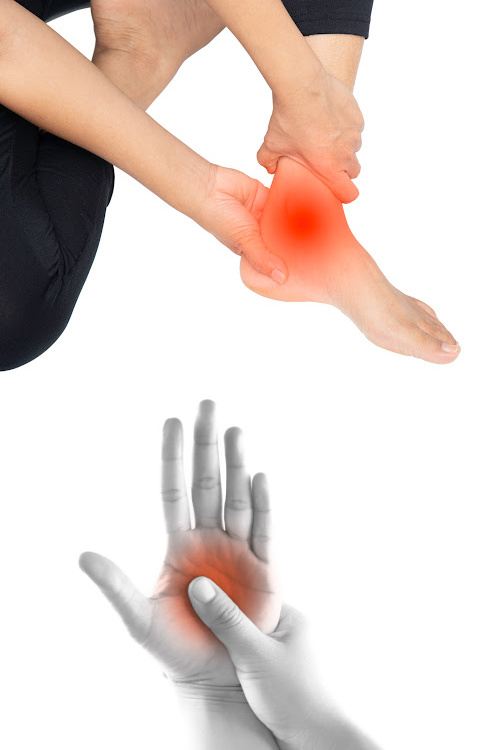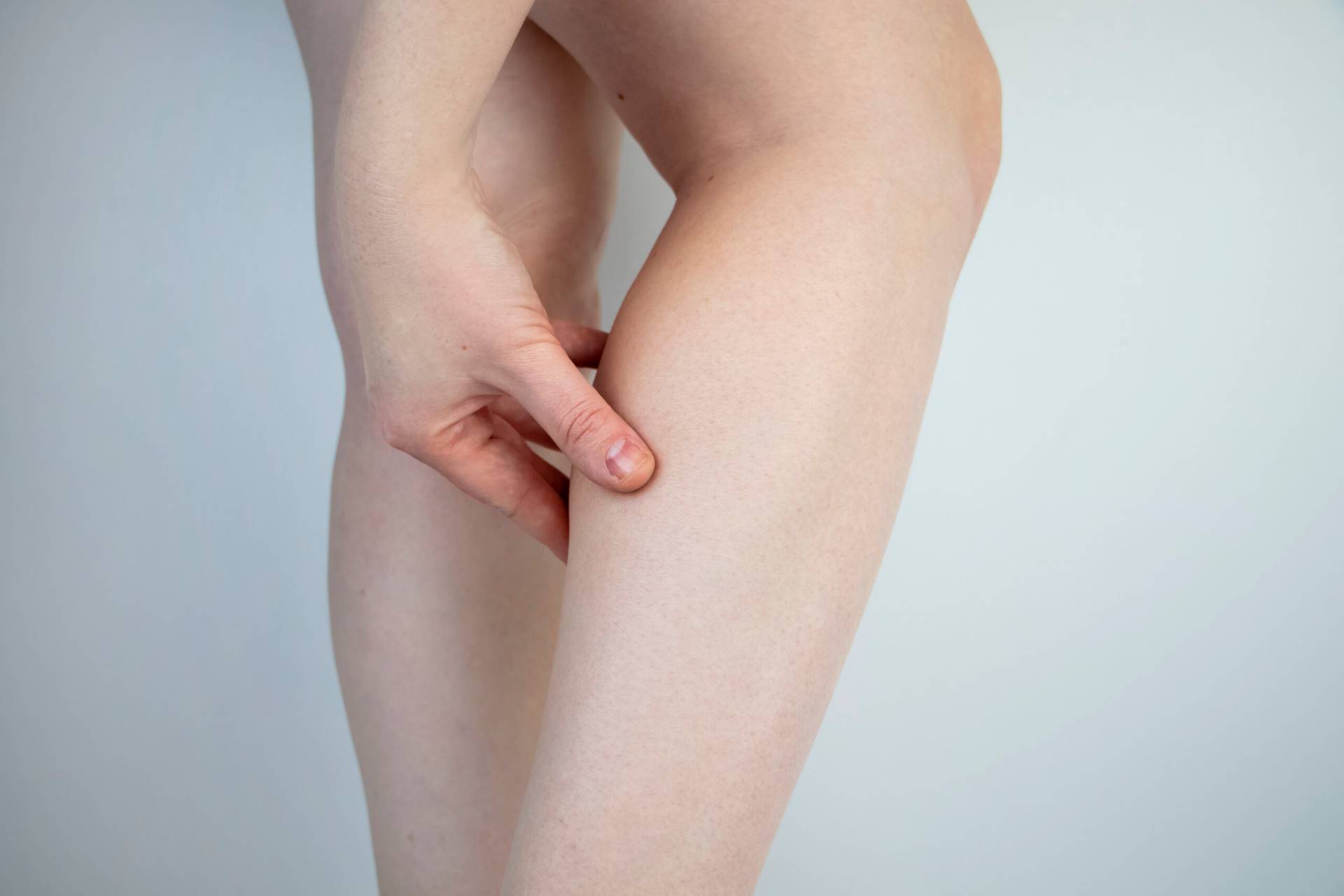If you’ve ever tried to relax or sleep but felt a constant need to move your legs, you’re not alone. This irresistible urge to move your legs is a sensation experienced by millions of people worldwide. Unfortunately, this urge can significantly impact daily activities and sleep patterns, leading to fatigue and irritability.
Restless legs can affect anyone of any age, but it’s more common in middle-aged and older adults. The condition can be temporary or chronic, and the causes vary from person to person. Fortunately, there are methods for managing and finding relief from this sensation.
Defining The Impulse To Move The Legs At Night
The sensation of needing to move your legs is a neurological disorder usually accompanied by other uncomfortable symptoms in the legs. This urge often occurs at night when trying to relax or sleep, leading to disturbed sleep patterns. People who have this urge generally can’t help but move their legs to find relief. Constantly moving your legs while trying to sleep will usually prevent you from getting the quality sleep you need.
Common Symptoms Associated With An Urge To Move The Legs
The urge to move the legs is often accompanied by other sensations. These additional sensations generally depend on the underlying condition that’s causing the urge in the first place. The following are some of the common symptoms that are often associated with an urge to move your legs:
Tingling And Electric Shock-Like Sensation
Some people may experience a tingling sensation or a feeling like an electric shock in their legs. This can be uncomfortable and disrupt sleep, leading to fatigue the next day. It’s believed that these sensations result from the nerves in the legs being overactive.
Crawling And Itching Sensation
Another common symptom is a crawling or itching sensation in the legs, also known as paresthesia. It can be described as having insects crawling under the skin, causing a strong desire to move the legs.
Burning Sensation
In some cases, people may experience a burning sensation in their legs, which can be quite uncomfortable. This sensation is often accompanied by the urge to keep moving the legs to find relief. Such a burning sensation is believed to result from nerve damage or leg inflammation.
Dull Or Persistent Ache In The Legs
Some individuals may experience a dull or persistent leg ache, making it difficult to relax or sleep. A dull or persistent ache is caused by muscle tension or inflammation in the legs, leading to discomfort and a feeling of heaviness.
Throbbing Or Rhythmic Pulsations
Throbbing or rhythmic pulsations in the legs are another common symptom of an urge to move the legs. These sensations can feel like a heartbeat in the legs and may occur regularly throughout the night, disrupting sleep. It’s believed that changes in blood flow or nerve activity cause this sensation.
Most Probable Causes Of Restlessness In The Legs
Restlessness in the legs can be caused by a combination of factors, and the exact cause varies from person to person. In some cases, it may be genetic, while others may develop it due to underlying health conditions or lifestyle habits. Following are some of the most probable causes of restlessness in the legs.
Iron Deficiency
Iron is essential for dopamine production, a neurotransmitter that helps regulate movement in the body. When there is a lack of iron, it can lead to a dopamine level imbalance, resulting in restless legs.
Pregnancy
Pregnancy is another typical cause of restless legs, particularly in the third trimester. First, pregnancy causes hormonal changes, which have been linked to leg restlessness. Second, the increased pressure on the legs caused by the added weight of the baby can also result in the urge to move your legs.
Restless Legs Syndrome (RLS)
Restless legs syndrome is a neurological disorder. The exact cause isn’t known, but it’s believed that an imbalance in dopamine (a neurotransmitter that helps regulate movement in the body) levels and dysfunction in the central nervous system contribute to this condition.
Peripheral Neuropathy
Peripheral neuropathy is a disorder that is known to cause issues with sensations in the legs, leading to discomfort and an urge to move them. There are many potential causes of peripheral neuropathy, including infections, metabolic problems, traumatic injuries, toxin exposure, and diabetes.
When To Seek Medical Attention
The urge to move your legs may not necessarily be a cause for concern. However, the following are instances when you should seek medical attention for restlessness in your legs:
- Persistent or worsening symptoms: If the urge to move your legs and associated sensations become more frequent or severe, it’s essential to consult a doctor.
- Significant impact on daily life and sleep: Insufficient sleep can lead to mood changes, difficulty focusing, and fatigue, all of which can impact your overall well-being. If the urge to move your legs at night is becoming so severe that it affects your sleep, you should seek medical attention.
How Is Restlessness In The Legs Diagnosed And Evaluated?
Because there are several different potential causes for leg restlessness, as well as numerous types of symptoms that can vary from person to person, a healthcare professional must evaluate each individual case. The following are the standard methods used to diagnose and assess restlessness in the legs.
Comprehensive Medical History
The doctor will begin by requesting your medical history. This will include questions about any underlying health conditions or medications you may be taking that could contribute to leg restlessness.
Physical Examination
The doctor will do a physical exam to look for any visible signs and assess the overall health of your legs. They will also check for tenderness, muscle weakness, or swelling.
Diagnostic Tests
There are no specific tests to diagnose leg restlessness, but certain tests may be ordered to rule out other potential causes. These include:
- Blood tests: Blood tests will often be ordered to check for iron, vitamin, or thyroid levels. Doing so can help identify any potential underlying conditions that may be causing the issue, such as anemia or thyroid disorders.
- Polysomnography: This test records brain waves, breathing, heart rate, and eye movements while you sleep. It can help determine if any underlying sleep disorders are contributing to the issue.
Conventional Treatment Options For Leg Fidgeting
Various treatment options are available to manage leg restlessness, and the appropriate course of action depends on the underlying cause. Here are some conventional treatments that may be recommended by your doctor.
Lifestyle Changes
While some underlying causes of leg restlessness are out of your control (such as genetic factors), specific lifestyle habits can worsen it. For instance, smoking, alcohol consumption, and excessive caffeine have all been linked to an increased risk of RLS. The following are some lifestyle changes often recommended for those suffering from leg fidgeting:
- Regular exercise: Exercise will improve your blood flow and reduce muscle tension, potentially reducing the urge to move your legs.
- Establishing a consistent sleep routine: Keeping a consistent sleep schedule will help to regulate the natural sleep-wake cycle of your body, potentially reducing symptoms at night.
Medications
Several medications may be prescribed to manage leg restlessness – especially if you’ve been diagnosed with RLS. However, it’s important to note that many medications have potential side effects and may not be suitable for everyone. Some common medications prescribed for RLS include:
- Dopamine agonists: These medications help increase dopamine levels in the brain and are often used to treat RLS. Potential side effects include cognitive impairment, nausea, dizziness, and fatigue.
- Alpha-2-delta ligands (gabapentin enacarbil): This medication helps reduce the abnormal firing of nerves that can cause RLS symptoms. Potential side effects include dizziness, nausea, and headaches.
- Opioids: In severe cases of RLS, opioids may be prescribed to manage symptoms. Opioids can help reduce sensations and improve sleep, but they come with a risk of addiction and side effects such as dizziness, respiratory problems, cognitive impairment, nausea, and constipation.
Complementary Therapies
A complementary therapy is a form of treatment that is used alongside conventional medical treatments to help alleviate symptoms, improve overall health, or manage side effects. Some common complementary therapies for leg restlessness include:
- Massage and stretching exercises: Massage can help relax the muscles, improve circulation, and reduce leg tension. Stretching exercises can help improve your flexibility as well as alleviate symptoms.
- Heat and cold therapy: Alternating between hot and cold packs can help reduce leg pain and discomfort.
Iron Supplementation
In cases where iron deficiency is the cause of leg restlessness, your doctor may recommend iron supplementation to increase iron levels in the body. This may involve taking oral supplements or receiving iron infusions, which are administered intravenously.
The Protocol For Managing Pain Induced By Restlessness In The Legs
Our protocol is the perfect solution for many of the conditions that cause restless legs. This is because we take a Neurofunctional Pain Management approach to treating pain, meaning we don’t just treat the surface symptoms. Instead, we target the neurological factors that are contributing to your symptoms. When it comes to helping treat restless legs, we use the following drug-free, non-invasive, non-surgical treatment modalities as part of our whole-person treatment plan:
Electroanalgesia
Electroanalgesia is a pain management technique that uses high-pulse electrical current to ease pain, boost blood circulation, improve mobility, and induce...
IV Therapy
IV nutritional therapy, or intravenous therapy, involves administering vital nutrients directly to the bloodstream through an IV. This type of treatment bypasses the digestive system, allowing for maximum absorption and utilization of nutrients by the...
Lifestyle Counseling
Lifestyle counseling is an approach to managing chronic pain that involves identifying, assessing, and modifying lifestyle factors contributing to an individual's pain. For example, lifestyle factors such as nutrition, physical activity, stress, sleep quality...
Read More About The Urge To Move Your Legs Lifestyle Counseling
We Relieve Conditions Associated With Pain Caused By Restlessness In The Legs
Because our protocol was designed to treat the underlying neurological factors that are contributing to restless leg pain, we can help manage symptoms associated with the following conditions that can cause restless leg pain:

Peripheral Neuropathy Pain Treatment
We offer a unique and leading-edge approach to treating the burning, tingling, throbbing pain that may be associated with peripheral neuropathy or nerve damage. We have helped 100’s of patients, just like you, reduce their pain fast and get back to living...

Restless Leg Syndrome Pain Treatment
RLS is a condition that causes an urge to move the legs, and can lead to discomfort, pain, exhaustion, and difficulty sleeping. Neuragenex NFPM is a non-pharmaceutical, non-chiropractic, and non-surgical (therefore, non-invasive) solution for restless leg...
Get To The Root Cause Of Your Nighttime Leg Crawling
Restlessness in the legs can be a frustrating and disruptive condition. However, you can manage your symptoms and improve your overall quality of life if you receive the proper diagnosis and treatment. If you’re experiencing persistent leg fidgeting or other symptoms associated with restless legs, consulting with your doctor to identify the underlying cause and develop an appropriate treatment plan is essential.
The Neuragenex protocol offers a drug-free, non-invasive option for managing pain induced by restless leg conditions, targeting the neurological factors contributing to symptoms. With a combination of electroanalgesia, IV nutritional therapy, and lifestyle counseling, we can help relieve symptoms associated with restless leg syndrome and peripheral neuropathy. Don’t let nighttime leg crawling disrupt your sleep any longer – contact Neuragenex today to learn more about our treatment options.
Put an end to the leg discomfort. Connect with us to address Restless Leg Syndrome.




